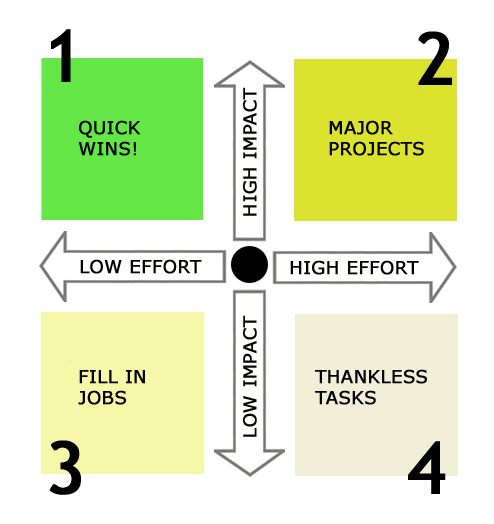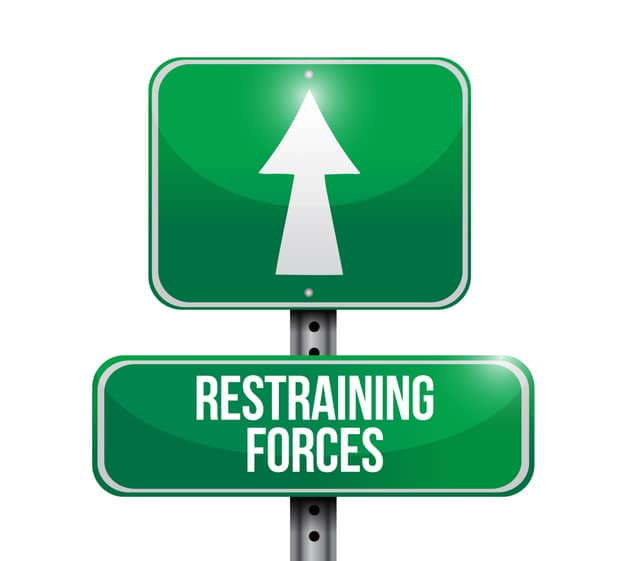An impact effort matrix acts as a decision-making tool to prioritize projects and manage time more efficiently. People can apply the matrix to any group of ideas, strategies and projects, assessing and prioritizing them based on the effort required and the potential positive benefits.
The impact effort matrix is sometimes referred to as the action priority matrix, effort/impact matrix or the 2×2 matrix. Six Sigma teams use the matrix to help them make the best choice when presented with a variety of options that can solve a business challenge. It’s frequently used to help set project priorities at the outset of the project.
As the American Society for Quality puts it, the matrix “provides answers to the question of which solutions seem easiest to achieve with the most effects.”
Why Should You Use an Impact/Effort Matrix?
Using an impact effort matrix allows companies to determine which activities they should focus on and which ones they can ignore. Because every business has limitations in the amount of resources it can devote to projects, the matrix is key to optimizing how those resources are put to use.
Some businesses also put the matrix to use when faced with challenges in current projects. Due to scope creep and other issues, projects can veer off course, lose focus and fail to achieve results not aligned with business goals. Using the matrix can help teams choose solutions that get projects back on track.
The matrix also optimizes reflective time. Most businesses understand the need to take the time to plan before beginning a project. However, many do not spend the time in the best way possible. The matrix cuts through the noise and gets teams focused on the root causes of issues and the best solutions.
How to Put Ideas into the Matrix
The impact effort matrix is simple and straightforward in design. Start by drawing a vertical line and horizontal line that connect at the bottom left of the diagram. Teams map the expected effort to implement an idea, strategy or project on the horizontal axis. They then map the impact of the idea, strategy and project on the vertical axis. Finally, they divide the entire area within the two lines into four quadrants.
Every member of the team writes down potential solutions to whatever challenge they face on a piece of paper. The group then discusses the effort involved with each idea, and the potential benefits of each one.
The team places the idea in the quadrant that best matches the effort and impact of doing them. The key here is complete honesty about the level of effort required for each solution, as well as accuracy about the benefits (data-driven, if possible).
The Four Quadrants of the Impact Effort Matrix
Here are the ways to consider each quadrant.
Upper left: This is the sweet spot – the low effort, high reward area. This is always the first solution teams should pursue to make a quick, substantial impact.
Upper right: Solutions that fall into this quadrant also offer big rewards, but they are far more difficult to do. Companies should only pick solutions that fall into this quadrant if they are committed to the long period of hard work it will take to achieve them.
Lower left: While these take little effort, teams should not prioritize these solutions. Instead, they should only give them attention after pursuing more rewarding solutions.
Lower right: Any ideas, strategy, solution, or project goal that falls into this category requires some honest discussion around whether the team should do them at all. Assess the impact of not doing this work and shift priorities to more impactful solutions.
Using the impact effort approach gives businesses and project leaders a straightforward way to determine the best course of action in many different situations. It’s also something they can get done quickly and efficiently, allowing a business to set a course without a long delay.
Like this post? Check out more Six Sigma tools and terminology on the Six Sigma Glossary.



